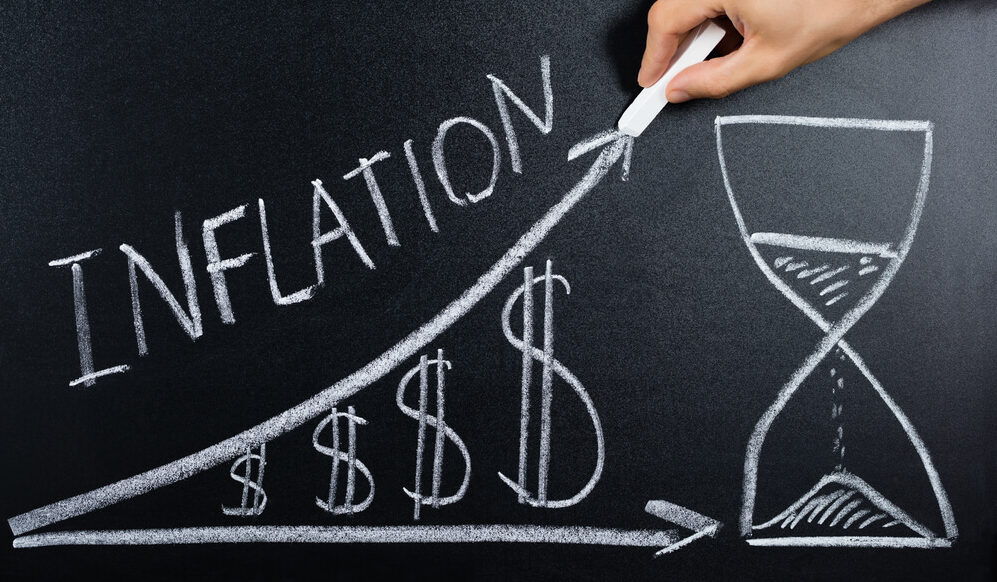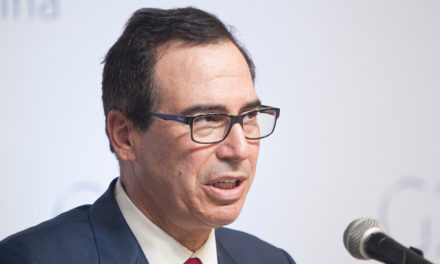In a shift from just a few months ago, Federal Reserve Chairman Jerome Powell is worried that too-low inflation could persist for a while — and undercut the U.S. economy.
Powell’s concern is a key reason why the Fed will likely cut short-term interest rates late this month for the first time in a decade: A rate cut — and especially if it’s followed by others — could help lift inflation closer to the Fed’s target level.
The chairman’s newly expressed worries about chronically low inflation reflect another sea change at the Fed: Powell and other officials seem to have jettisoned a long-standing economic rule of thumb that a long streak of low unemployment will inevitably raise inflation too high.
The U.S. unemployment rate has remained under 5% for roughly three years. And yet annual inflation has consistently failed to reach the Fed’s 2% target.
All of which suggests that the Fed is now prepared to keep borrowing costs low for households and businesses indefinitely — even if the job market and the economy keep growing steadily. It’s a prospect that has delighted investors, who have lifted stock indexes to record highs.
“The connection between the level of unemployment and inflation was very strong if you go back 50 years, and it’s gotten weaker and weaker and weaker to the point where it’s a faint heartbeat,” Powell testified on Capitol Hill this week in response to questions from Rep. Alexandria Ocasio-Cortez, a New York Democrat. “We really have learned that the economy can sustain much lower unemployment than we thought without troubling levels of inflation.”
Kathy Bostjancic, an economist at Oxford Economics, a consulting firm, said Powell’s comments marked a sharp turnaround from last year. The Fed had justified its four rate hikes in 2018 in part by arguing that robust hiring would eventually ignite inflation.
“There’s been a big shift in their thinking,” Bostjancic said. “The Fed’s been slow to this idea.”
Typically in the past, when unemployment has fallen very low — such as to the current 3.7% — employers are compelled to offer higher pay to attract and keep workers. These employers, in turn, raise prices to offset the cost of their higher wages.
Yet that dynamic, which economists call the “Phillips Curve,” has yet to kick in during the decade-long expansion. Consumer inflation in June, for example, was up just 1.6% in June compared with 12 months earlier, below the Fed’s target.
Most Americans, of course, prefer low prices. But the Fed has reasons to worry when inflation stays consistently below its target level. Their biggest concern is that when businesses and consumers expect ultra-low inflation to remain in place, they factor it into decisions, such as how much they’re willing to spend or raise pay. Why spend or pay more now if prices aren’t likely to rise and might even fall?
Once such low expectations become entrenched, Powell warned in congressional testimony Wednesday, they’re difficult to dislodge. Central banks in Japan and Europe have cut their interest rates into negative territory — meaning that holders of government bonds actually lose money — in desperate efforts to accelerate growth and prices.
“You don’t want to get behind the curve and let inflation drop below 2%,” Powell said Wednesday before the Senate Banking Committee, the second of two days of testimony.
Yet according to the Fed’s preferred inflation gauge, it has been below 2% for nearly the entire seven years since the central bank chose that target.
As recently as a May 1 news conference , Powell had characterized lower inflation since the start of the year as merely “transitory,” blaming trends such as a drop in clothing prices. But in his congressional testimony this week, he acknowledged “a risk that weak inflation will be even more persistent than we anticipate.”
Economists point to a range of factors that are holding inflation to ultra-low levels. Globalization has enabled the production of many goods in low-wage countries, thereby lowering costs. The so-called “Amazon effect” of online shopping, which allows real-time, across-the-board price comparisons, has made it difficult for retailers to charge more.
Fewer workers belong to unions and so have less bargaining power to seek higher pay. And by some measures, the U.S. workforce is, on average, less efficient: Growth in productivity, which measures output per hour worked, has remained notoriously weak during the expansion. That has given companies less incentive to raise pay.
Powell and other Fed officials have expressed hope that a rate cut will make it cheaper to borrow and buy a home or car or make other purchases and thereby speed the economy. Faster economic growth could nudge inflation up, at least slightly.
Higher inflation does offer some benefits. It helps grease the wheels of the economy: People are more likely to buy something if they fear it will cost more later. Companies are more likely to raise pay to keep up with higher prices, which makes it easier to pay off debts.
Still, further Fed rate cuts do carry risks: A few Fed officials warned at its last meeting in June that a rate cut could help fuel a bubble in the stock market. That’s because lower interest rates would likely lead more and more investors to abandon low-yielding bonds and seek higher returns in stocks.
But overall, there is rare bipartisan agreement about the need for the Fed to lower its benchmark rate.
Larry Kudlow, a top White House economic adviser, praised Ocasio-Cortez on Fox News Channel’s “Fox & Friends” for challenging Powell on the Fed’s long-held belief that low unemployment would accelerate inflation.
“I got to give the hats off — Ms. AOC kind of nailed that,” Kudlow conceded.
© The Associated Press. All rights reserved.




